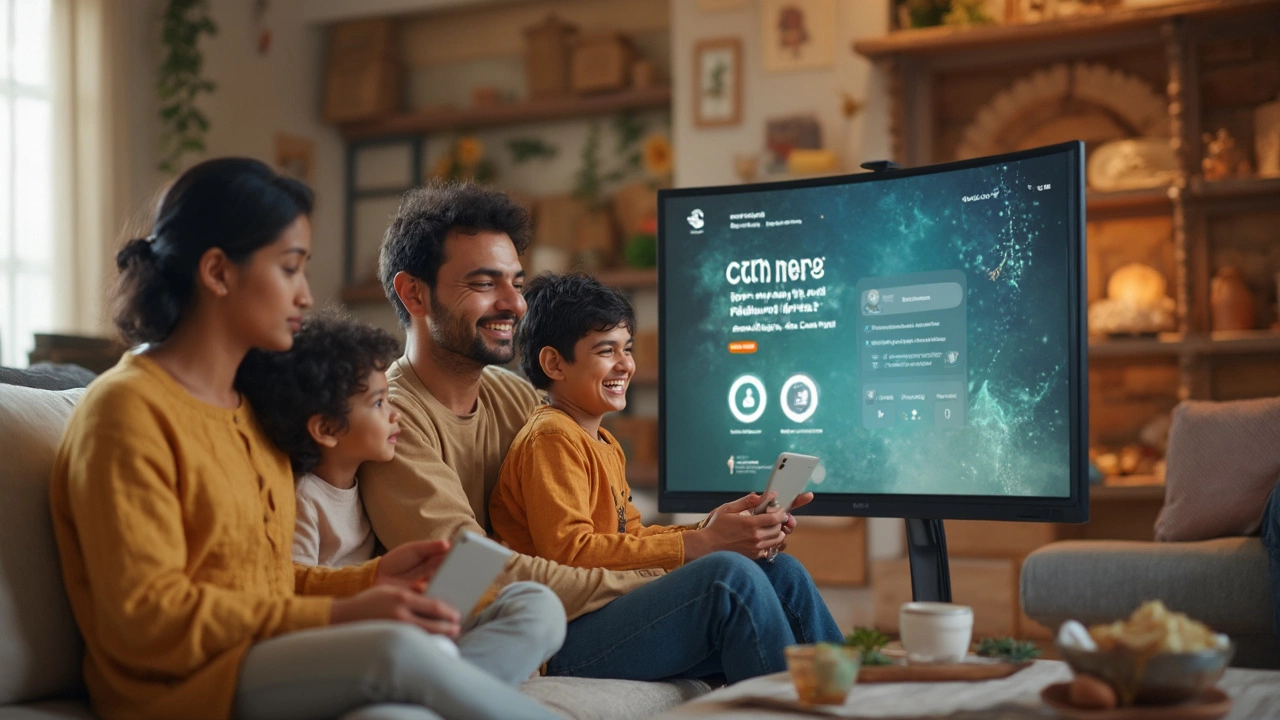Ever wonder why some websites just grab you right away, while others make you want to hit the back button within seconds? It’s usually not about wild colors or the latest design trends. The real magic is simple: a website has to make things easy—and actually useful—for people who visit. Mess that up, and nobody’s sticking around.
Before you start dreaming up wild animations or stuffing your site with buzzwords, think about why someone came to your website in the first place. Are you helping them solve a problem, find an answer, or buy something without a ton of hassle? If not, even the coolest graphics can’t save you. It sounds basic, but so many sites forget it. A killer design always puts the visitor first. That’s what makes the difference between a site people use and one they forget.
- It’s All About User Experience
- Fast Load Times are Non-Negotiable
- Navigation: Simple Beats Fancy
- Content that Connects and Converts
- Earning Trust, One Click at a Time
It’s All About User Experience
User experience, or UX for short, is what sets apart a successful website from the rest of the pack. It means your site feels smooth, looks good, and makes people want to stick around. Google has even said that UX is a ranking factor for search—so if you're chasing more visitors, you can’t ignore how your website actually works for people.
The best websites feel almost invisible. Everything just seems to work—buttons behave the way you expect, pages load quickly, and nothing is confusing. A study by Forrester Research found that a well-designed user interface can raise a website’s conversion rate by up to 200%. That’s not just theory; it's what actually brings in more sign-ups or sales.
When building or fixing your site, check these basics:
- Mobile first: More than half of all web traffic comes from phones. If your site only looks good on a laptop, you’re losing people right from the start.
- Clarity over cleverness: If people can’t tell what your site is for in the first five seconds, they’re probably gone. Simple language and clear calls to action win every time.
- Consistent layout: Pages should follow the same patterns—menus shouldn’t jump around, and buttons should look the same everywhere. This saves your visitors from hunting for what they need.
- Accessibility matters: Websites should work well for everyone, including people who use screen readers or zoom in with big text. There are tools like contrast checkers to help you ensure everyone can navigate your site just fine.
I remember when Rohan, my son, tried to find his homework on his school’s clunky site. Impossible menus, tiny buttons, and too much jargon. A better user experience would have helped every parent—or kid—using that site. Don’t make people work hard for basic things.
The bottom line: no amount of cool design will fix a site that's a pain to use. Nail the basics of user experience, and you’re already ahead of most websites out there.
Fast Load Times are Non-Negotiable
If you’ve ever clicked away from a site that’s taking ages to show up, you know how important speed is. Google found that if a page takes more than three seconds to load, over half the people will leave. Mobile users are even less patient. When your site lags, say goodbye to visitors, sales, and even your search ranking.
Search engines like Google actually rank slow websites lower on their results, which hurts your visibility. You can have the best-looking site in the world, but if it crawls, almost nobody will see it. If you care about having a successful website, this is mission-critical.
- Compress images before uploading. Big, unoptimized images are the number one reason sites get slow.
- Pick a solid hosting plan. Cheap hosting might sound good, but you’ll pay for it in lost visitors.
- Limit bulky features like custom fonts, auto-play videos, and huge plugins. Only use what truly adds value.
- Set up browser caching, so returning visitors don’t have to reload everything from scratch.
- Test your site on tools like Google PageSpeed Insights to spot problems and get concrete fixes.
Every second counts. Keeping things running fast isn’t just about looking smart—it’s about holding onto real people who might buy, subscribe, or share your stuff. If you fix nothing else, fix load speed first.

Navigation: Simple Beats Fancy
If there's one thing you have to nail for a successful website, it's navigation. Most people don't have the patience to hunt around for what they need. If they can't find it in a couple of clicks, they're out. Simple menus work not just for tech pros, but for anyone—my dad, my teenage son, or even your grandma. That's not just my experience—studies by Nielsen Norman Group back it up: people almost always scan for the clearest routes, not the fanciest buttons.
Here's what matters most:
- Keep your menu short and obvious. Stick to 5-7 main choices. Give each one a label that actually says what it is—skip the cutesy names. For example, "Shop," "About," and "Contact" always beat clever wordplay.
- Put your nav in places people expect. The top of the page or on the left side works best, because that's where everyone starts looking. Hide it and you risk losing them right from the start.
- Always make your logo link to your homepage. Sounds trivial, but you'd be surprised how often people get lost when this link's missing.
- Use breadcrumbs if your site has lots of pages. They show users where they are at a glance and let them jump back easily. Amazon nails this with their "Home > Electronics > Headphones" style links.
- Mobile nav should always be within thumb's reach. On phones, menus hidden in tiny text or stuffed at the top make users frustrated fast. Stick to simple "hamburger" menus and big, easy-to-tap buttons.
The point? Flashy effects and hidden drop-downs sound cool in theory, but real people just want to get where they're going, fast. If you help them do that, you’ll see more clicks, less confusion, and visitors who actually stick around.
Content that Connects and Converts
If you want your website to mean business, your words need to do more than just fill space—they need to reach people and drive them to action. You might have a flashy homepage, but if your content doesn’t speak clearly to someone’s need, they’ll leave before you’ve even made your point.
This isn’t just guesswork. Research by Nielsen Norman Group shows that people scan web pages in seconds, not minutes. Most folks don’t read every word—they look for headlines, bullet points, and simple explanations. So, keep paragraphs short, break things up with subheadings, and get to the point fast. Good web copy talks like a friend, not a robot. If you wouldn’t say it out loud, don’t type it on your site.
- Use simple language—skip the jargon and stick to how people actually talk. My son Rohan usually sums up his homework questions in one sentence, and your content should do the same for your main point.
- Make your calls to action super clear. Want visitors to sign up? Say it directly. Don’t hide your best stuff behind fluffy words or too many clicks.
- Add real examples, customer stories, or even short testimonials. The more real your content feels, the more people trust it.
- Update your info regularly—nobody trusts outdated details. Out-of-date pricing or old blog posts make your site look neglected.
SEO matters, too. Naturally drop your main keywords like successful website into your headlines and body text. Don’t cram them everywhere, but don’t ignore them either. Google cares if your content sounds natural and actually answers questions people ask.
Bottom line: If your content feels honest, solves a real problem, and guides the visitor to the next step, your site stands out. No marketing tricks needed—just clear, helpful info and a human touch.

Earning Trust, One Click at a Time
If visitors don’t trust your website, they won’t buy, sign up, or even stick around. People are picky online, and it’s for good reason—scams and shady sites are everywhere. A successful website shows it’s real and dependable from the start.
Quick facts: About 75% of users judge a company’s credibility based on its website design. If your site looks outdated or sketchy, visitors might bounce right to a competitor.
Building trust isn’t just about a nice logo. Here’s what really helps:
- Use a professional email address (not Gmail or Yahoo) for contact info—makes your site look legit instantly.
- Show clear contact details and a physical address. This isn’t just for shops. Even blogs or service sites feel more real when there’s a way to reach you.
- Get that little padlock icon—an SSL certificate. If your site shows "Not Secure," people aren’t entering their credit cards. Period.
- Add real customer reviews or testimonials. Don’t fake them—honest ones are ten times better than lots of perfect-sounding blurbs.
- If you collect any info, explain what you’re doing with it in a privacy policy. Even short, direct statements help.
- Don’t hide your About page. Show you’re a real person or team, maybe with a photo. It makes a world of difference.
Here’s a quick breakdown of what most people care about when they visit a new site:
| Trust Feature | Why It Matters |
|---|---|
| SSL/HTTPS | Secures data; browsers warn users if missing |
| Clear Contact Info | Makes company look genuine and reachable |
| Customer Reviews | Social proof; influences almost 9 out of 10 buying decisions |
| Modern Design | Old sites look abandoned or untrustworthy |
| Privacy Policy | Shows respect for visitor data; required by law in many places |
One last tip: make sure your site actually works. Broken links or forms send trust through the floor. Test everything monthly (I get my son Rohan to try things on our family site—he breaks things in ways I never imagine!). It pays off, since reliable sites keep visitors happy and coming back.
If you nail these basics, your website will already be ahead of most out there. Whenever you make changes, ask yourself: does this help someone trust us more? That’s how you build a successful website, one click at a time.
